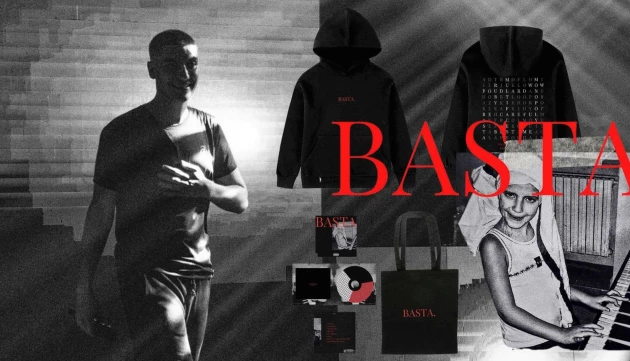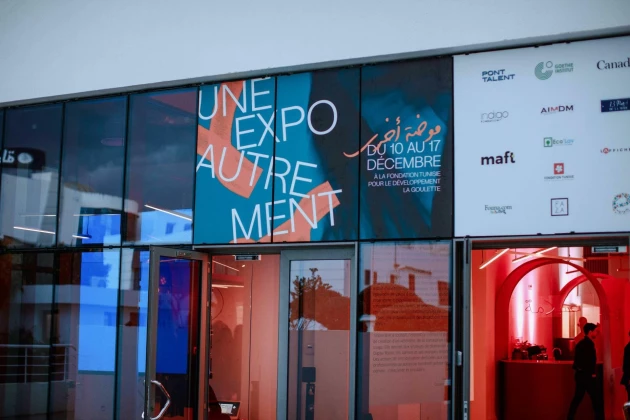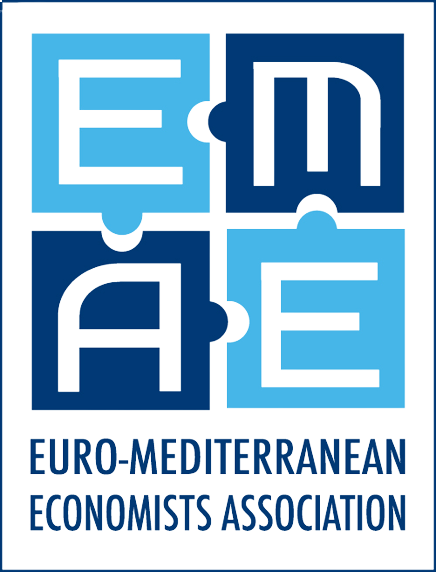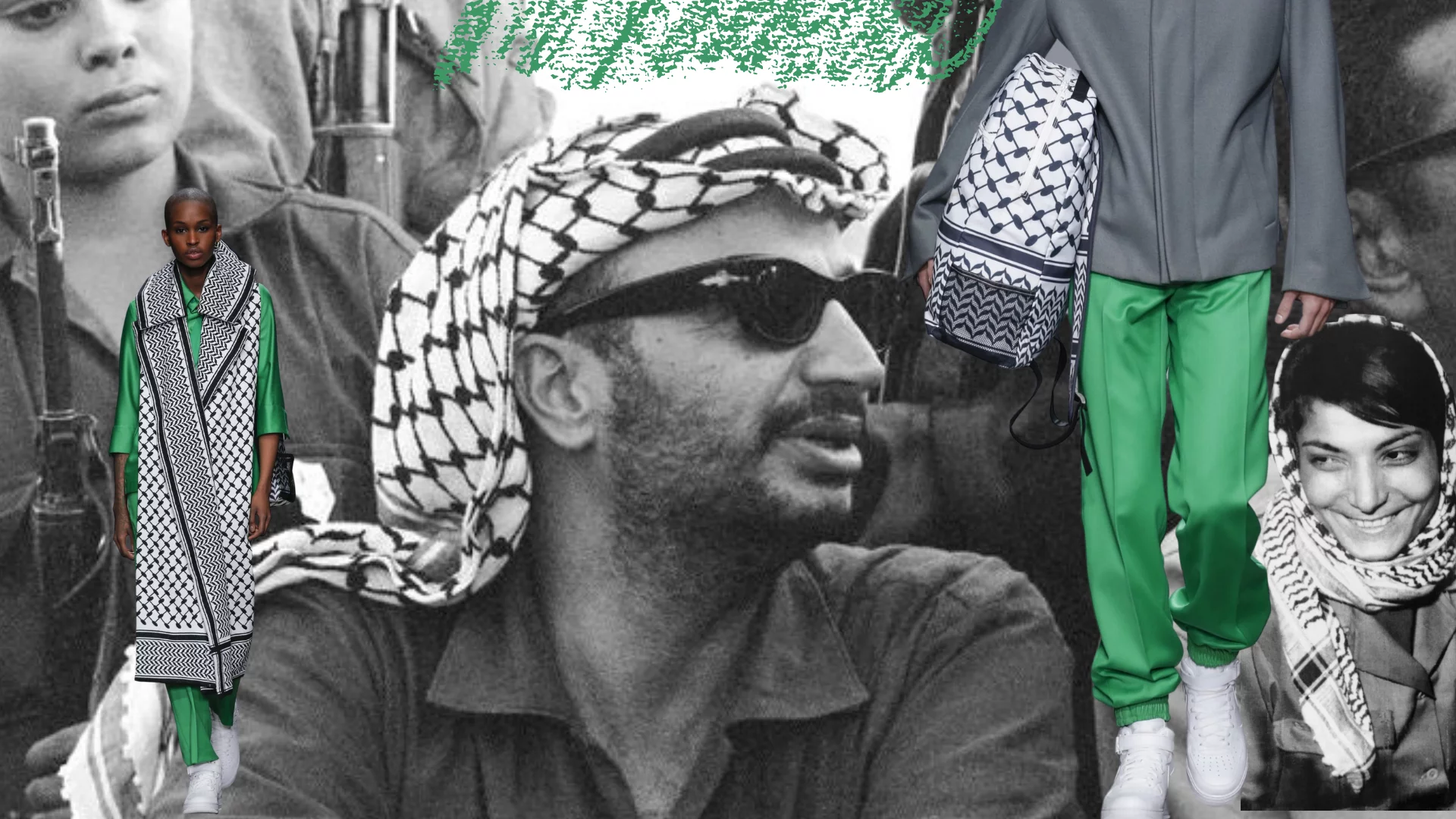
We celebrate the difference
Palestinian Keffiyeh : The ultimate statement piece
9 min read — Dec 20, 2023
Zeineb Ouertatani & Eya Rziga.
In the harsh reality faced by Palestinians today, the experience is akin to the world scrutinizing a naked body, worn and battered for over 75 years. The continuous attacks on Gaza, persisting for more than 75 days, paint a haunting picture of what can only be described as a genocide — visible on our screens and across social media platforms.
Within this relentless adversity, the famous Palestinian scarf "Keffiyeh” emerges as a symbol of resilience, embodying the spirit of a people enduring a conflict that extends far beyond the simplistic narratives often presented. It is a symbol of hope and resistance that pushes fashion beyond mere whispers and magnifies the unheard pleas of the Palestinian people.
However, this scarf has also suffered a big toll of scrutiny of its own.
A Google search for “What do terrorists wear on their head?” brings up images of the Palestinian Keffiyeh alongside pictures of terrorists waving the Daesh flag or Muslim women wearing hijabs.
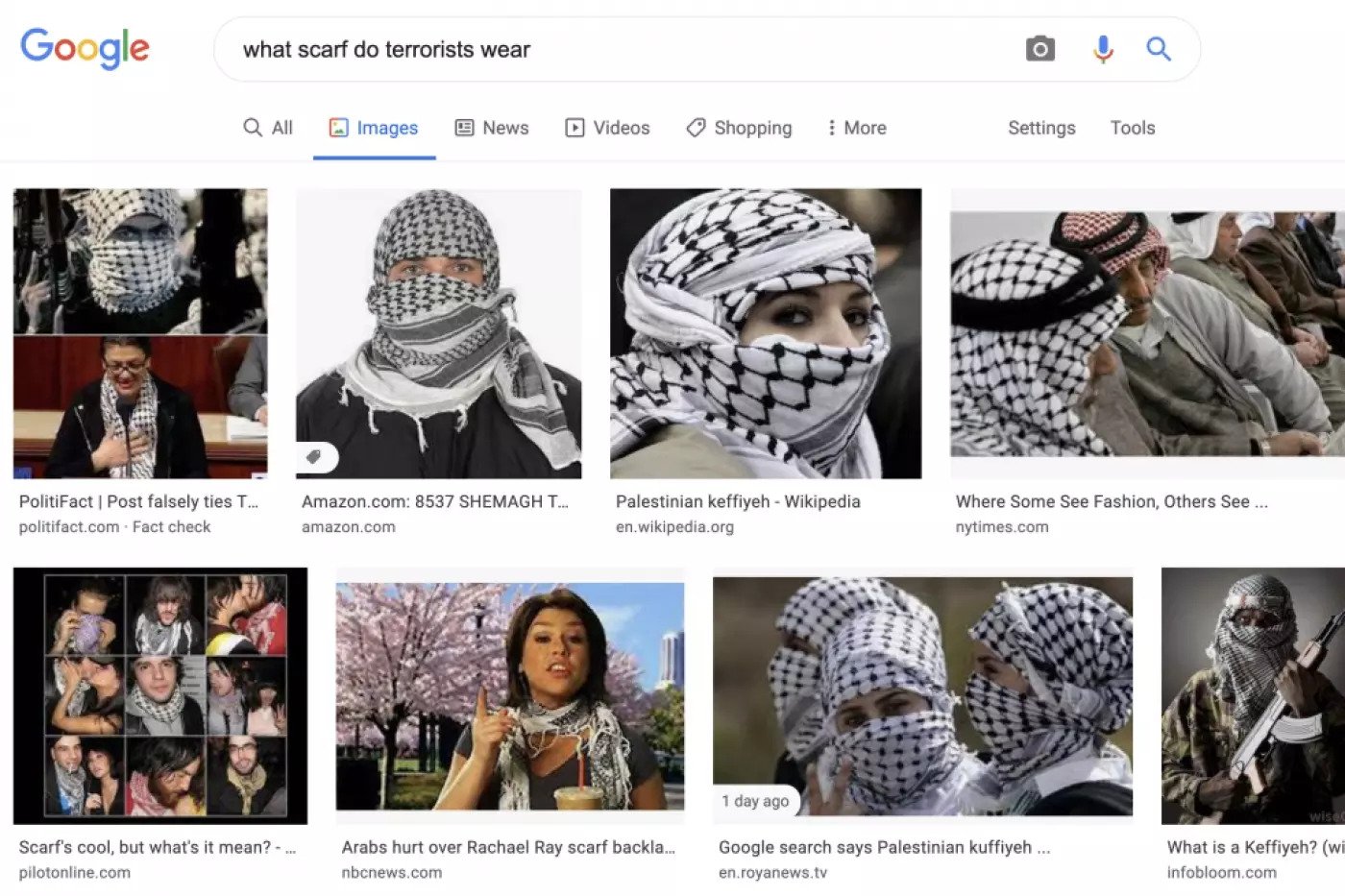
This misappropriation of the Palestinian scarf in online searches, associating it with terrorism, is a distortion that demands an exploration of its origin and an understanding of the underlying factors contributing to this unsettling phenomenon.
In this article, we unravel another perspective behind this misappropriation and delve into the complex reasons behind its occurrence.
Starting with the scarf’s roots; The Palestinian Keffiyeh (a.k.a. kufiya, shemagh, or hatta) is a black and white checkerboard headscarf. First originated thousands of years ago from the Sumerians and Babylonians in 3100BC Mesopotamia in the “Kufa” region of Iraq.
Over time, it became popular among Bedouin and agricultural communities in the Middle East as a protective garment. Meaning that it didn’t gain its cultural significance until the British Mandate and the 1930s Arab revolt.
The scarf later evolved into a powerful symbol of Palestinian cultural expression and also serves as a representation of the constant resistance and fights of Palestine for its rightful will to live in peace and prosperity in its land against Israeli occupation.
If you look closely at the design of the scarf, you can see different thread widths on the fabric, each one of them holds a story.From afar we find that Its distinctive black-and-white stripe a symbol of Palestinian nationalism and solidarity going a more into details; The bold stripe on the scarf represents the three trade routes going through Palestine, highlighting a long cultural exchange, and the “fishing net” threaded pattern pays homage to the link between the Palestinian sailor and the Mediterranean Sea and finally the olive leaves' pattern illustrates perseverance, strength, and resilience.
 Credits : Kufiyah.org
Credits : Kufiyah.org In fact, apart from the design having its historical significance, the Keffiyeh gained prominence when it started getting worn by iconic figures like Yasser Arafat and Leila Khaled.
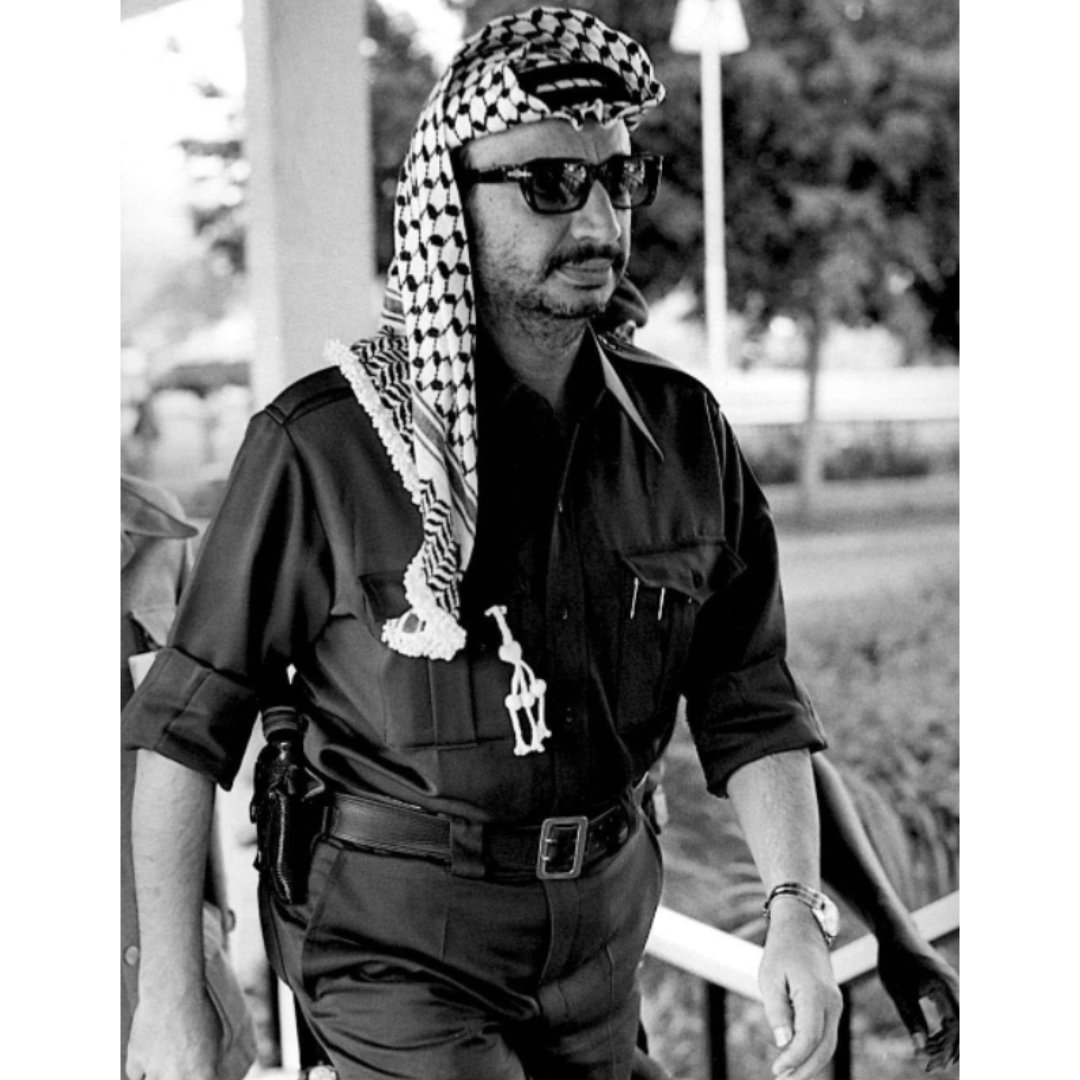
Both of the two militants wore it as an act of encouragement and reinforcement of its importance in Palestinian culture which launched a sense of solidarity and unity, transcending gender and age.
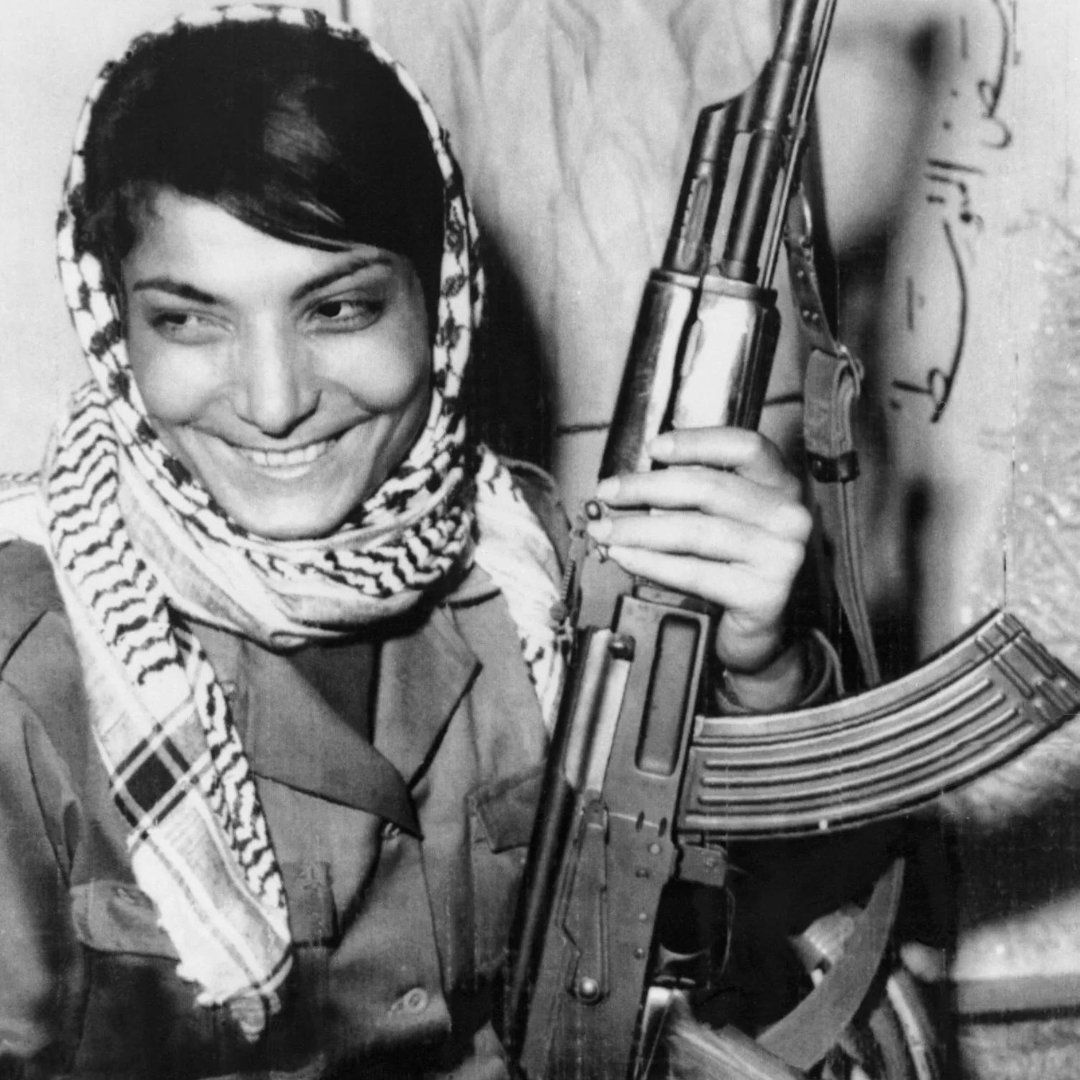
Paving the way for the garment, today, to be worn by people of all backgrounds In the world. From the West to the East and from the North to the South. Human rights activists, politicians, star athletes, and even celebrities like Kanye West, David Beckham, and Bella Hadid. Whilst this has sparked up debates about cultural appropriation, it is undoubtedly telling of the Keffiyeh’s influence at a global scale.
Keeping on the global scale path, we also fall upon the first signs of misappropriation that has been launched by the fashion industry, who played a pivotal role in creating a divide between the authentic essence of the Keffiyeh and its representation in popular culture. Some fashion houses, rather than honoring the historical roots of the scarf, have chosen to exploit its significance, severing it from its rich heritage.
Moving beyond the confines of the fashion industry, we confront a deliberate attempt to erase the profound historical roots embedded in this cultural symbol, reducing it to a simplistic stereotype. This distortion extends into the heart of the Israeli-Palestinian conflict, where the Keffiyeh is strategically linked to terrorism as part of a calculated effort to discredit the legitimate Palestinian struggle for freedom.This association raises crucial questions about the origins of the misappropriation and whether the Keffiyeh was genuinely worn by terrorists. It also reveals that this deliberate linking of the garment to acts of violence seeks to manipulate perceptions and cast a shadow over the broader Palestinian cause.
The media also plays a role in this, presenting the garment in a way that oversimplifies its meaning, making it difficult for people to understand its true essence. Beyond the political and media spheres, a broader issue of cultural ignorance arises, where diverse symbols are unfairly grouped into a single negative narrative.
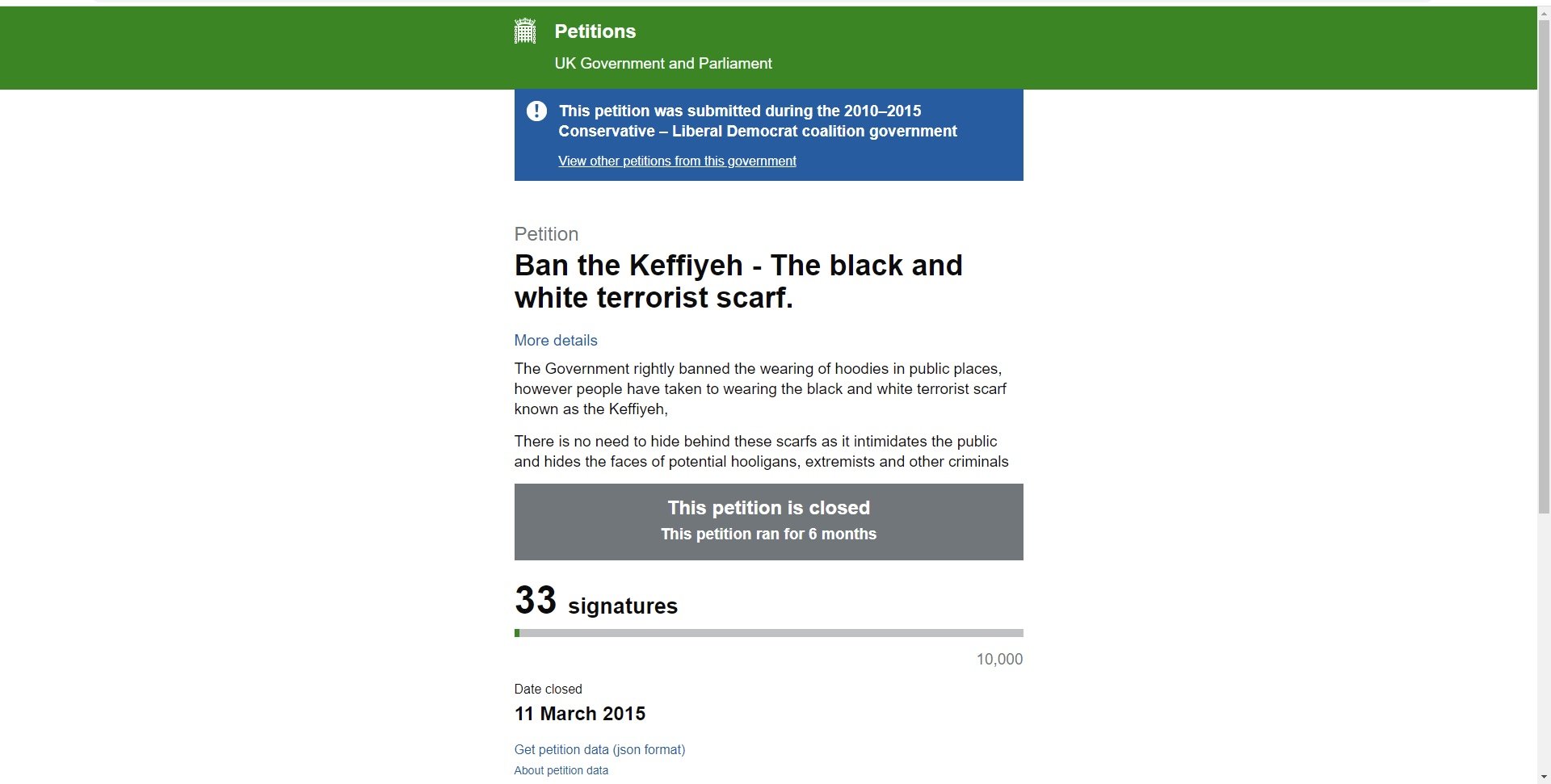
But why would Google misinterpret the Keffiyeh as a symbol of terrorism when it knows its history?
Media representations, sometimes lacking depth or accuracy, associated the Keffiyeh with negative connotations such as terrorism due to limited understanding or biased portrayals, contributing to misinterpretations.
Yes, indeed, the scarf's association with Palestinian identity and resistance has a historical context deeply intertwined with political struggles. Palestinian rebels historically used the unique headscarf as a means to conceal their identities during conflicts and resistance against occupation forces. It became a symbol of solidarity and resistance, notably worn by figures like Yasser Arafat, the leader of the Palestine Liberation Organization, who frequently wore it as part of his attire during the struggle for Palestinian rights and against occupation.
The scarf's usage in such contexts aimed not only at concealing identities but also at symbolizing unity and resistance against oppression. However, these historical associations were sometimes misinterpreted or exploited by media or political opponents, attempting to establish links between the headscarf and groups deemed as terrorists. Such representations created misconceptions and blurred the genuine cultural significance of the Keffiyeh as a symbol of Palestinian identity and resistance.
These interconnected influences fueled the misinterpretation of the Keffiyeh, altering its perception from a symbol of solidarity and resistance to a commercialized fashion item or even a misinterpreted political emblem.
However, it’s important to emphasize that wearing the garment doesn’t inherently imply involvement in terrorism.
These instances primarily represent a misinterpretation or deliberate attempt to associate the garment’s symbolism with movements or groups deemed as terrorists by some entities. In Its genuine context, it represents cultural heritage, solidarity, and resistance within Palestinian culture.
Amidst the challenges, Palestinian fashion designers have emerged as a ray of hope, redefining the Keffiyeh and incorporating it into various forms of fashion. From haute couture to streetwear and intricate embroidery, these designers showcase the cultural richness and distinct perspectives of Palestine.
Artists like Shadia Mansour and Omar Joseph Nasser-Khoury, a Palestinian fashion designer, have spoken out against the appropriation, emphasizing the need to respect and protect the cultural significance of the Keffiyeh. One example to be mentioned, FT.WA, a pioneering Pakistani brand, blending London's urban dynamism with Karachi's raw essence. Their latest collection, 'The Resistance Capsule', ignites a powerful narrative of solidarity and identity in support of Palestine. We can't help to also mention the revolutionary collection of Aziz Bekkaoui : "World keffiyeh Day" launched back in 2022, a collection that screams resistance and celebrates the keffiyeh pattern through one-of-a -kind creations.
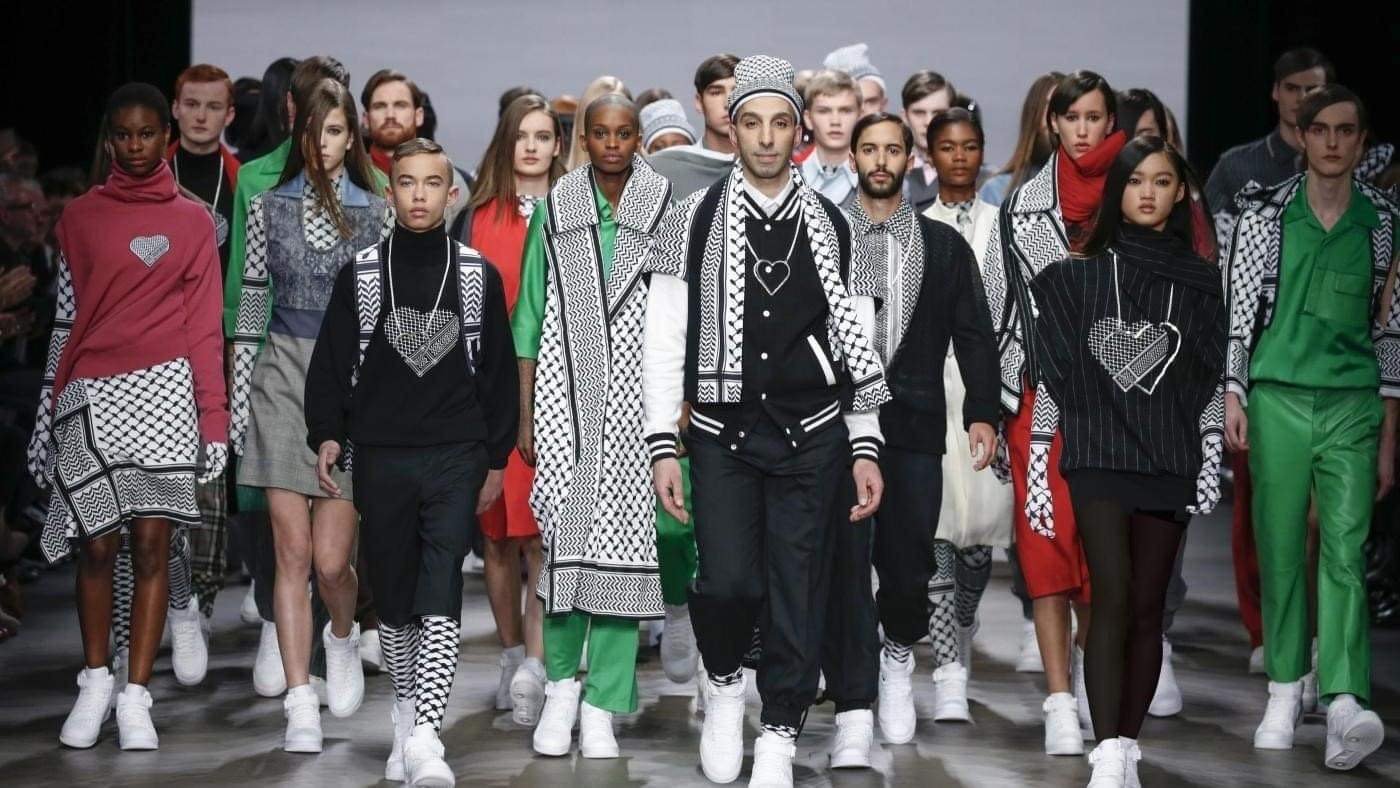 Credits : World Keffiyeh day - Collection 22 of Aziz Bekkaoui, fashion designer of Moroccan origin
Credits : World Keffiyeh day - Collection 22 of Aziz Bekkaoui, fashion designer of Moroccan origin The Palestinian Keffiyeh, once tainted by political conflicts and misappropriation, is now reclaiming its roots. It stands as a symbol of unity, strength, and heritage, untouched by exploitation.
The commercialization and appropriation of the Keffiyeh
You can't help but notice that the fashion industry has created a divide between the genuine essence of the headscarf and its portrayal in popular culture. While some fashion houses have exploited its cultural significance, severing it from its historical roots, others have faced international backlash for profiting off the symbol of resistance and oppression.
From luxury brands like Fendi and Louis Vuitton to fast-fashion retailers like Urban Outfitters, and Topshop, the Keffiyeh has been used as a design element in clothing collections, accessories, and even lingerie.
These brands have faced criticism for disregarding its cultural symbolism and using it solely for profit, without benefiting the Palestinian people. Even among fashion designers, the paradox persists. Cecilie Jorgensen of Cecilie Copenhagen has launched a collection featuring keffiyeh-print clothing, blurring the lines between homage and appropriation. Meanwhile, Dorit Baror operates a store in Tel Aviv selling keffiyeh-derived clothes, raising questions about the ethical implications of cultural commodification within the fashion industry.
The commercialization of the Keffiyeh by fashion houses and retailers has detached its cultural significance, focusing solely on profit.
This stark contrast is evident when compared to the efforts of the last Keffiyeh factory in Palestine, Hirbawi Kufiya. This factory preserves the scarf's heritage and rich history dating back to 1961, while employing unique handcrafted techniques and sustaining artisans, ensuring the symbol's legacy endures through generations while offering authentic, culturally significant products.
To help support the cause and show solidarity with the Palestinian people, here are some actions you can take:
- Follow relevant Palestinian journalists and designers on social media to stay informed about their work and the issues they highlight, like mayssamustafa29 , @etafrum .
- Educate yourself about the history, culture, and struggles of the Palestinian people. Understanding their narrative can help combat misinformation and promote empathy and understanding.
- Donate to reputable organizations working on the ground to provide humanitarian aid and support to Palestinians.
Remember, It's crucial to be mindful of how cultural symbols are used and ensure that their portrayal aligns with their historical and political context.
We proudly stand in unwavering solidarity with our brothers and sisters, the Palestinian people, recognizing the Keffiyeh's profound and heartfelt dual role as a symbol of unwavering resistance and cherished cultural heritage. This scarf holds an indescribable significance for Palestinians, representing their ongoing and relentless struggle against the persistent Israeli occupation, as well as serving as a steadfast embodiment of their rich cultural identity.
Despite relentless attempts to dilute and undermine its sacred meaning, the Keffiyeh has triumphed, standing as a resilient testament to the unyielding spirit and unwavering determination and resistance. It continues to be embraced by Palestinians and supporters around the world, who hold it dear as a powerful symbol of unwavering resistance and cherished cultural heritage
Our stand isn't about ownership but understanding. The Keffiyeh is deeply tied to Palestinian culture and history. Wearing it without recognizing its significance perpetuates misconceptions about people facing existential threats.
Thus, it’s a shared responsibility to preserve the Keffiyeh's cultural heritage, reinstating narratives and countering biased portrayals. Fashion, for us, is a means to express truth and challenge discomfort.
Finally, echoing the words of Diana Buttu, the former spokesperson for the Palestine Liberation Organization (PLO) :
"Resistance is not just a strategy; it's a part of our identity, a reflection of our refusal to surrender to injustice."
